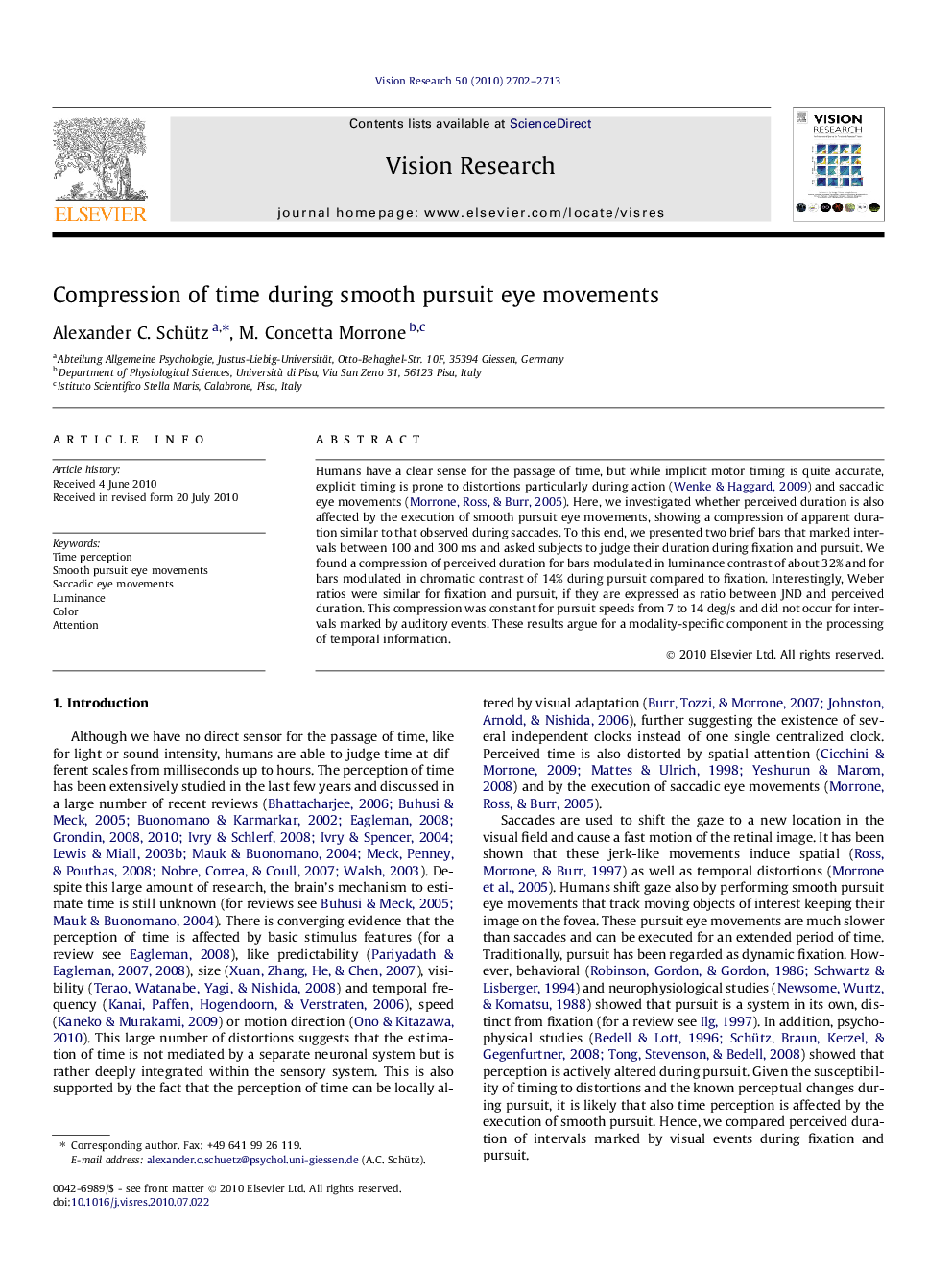| Article ID | Journal | Published Year | Pages | File Type |
|---|---|---|---|---|
| 4034224 | Vision Research | 2010 | 12 Pages |
Humans have a clear sense for the passage of time, but while implicit motor timing is quite accurate, explicit timing is prone to distortions particularly during action (Wenke & Haggard, 2009) and saccadic eye movements (Morrone, Ross, & Burr, 2005). Here, we investigated whether perceived duration is also affected by the execution of smooth pursuit eye movements, showing a compression of apparent duration similar to that observed during saccades. To this end, we presented two brief bars that marked intervals between 100 and 300 ms and asked subjects to judge their duration during fixation and pursuit. We found a compression of perceived duration for bars modulated in luminance contrast of about 32% and for bars modulated in chromatic contrast of 14% during pursuit compared to fixation. Interestingly, Weber ratios were similar for fixation and pursuit, if they are expressed as ratio between JND and perceived duration. This compression was constant for pursuit speeds from 7 to 14 deg/s and did not occur for intervals marked by auditory events. These results argue for a modality-specific component in the processing of temporal information.
Research highlights► Perceived duration is compressed during smooth pursuit. ► Weber ratios are constant if expressed as function of perceived duration. ► Compression occurs for luminance- and color-defined intervals. ► Acoustically-defined intervals are not compressed.
